 |
| In 1904, during maneuvers, the French Army uses optical signalling by kites to command the troops. Once the kite aloft, one, two or three flags are attached to its line in order to forward the orders from the head quarters (1 : operation suspended, 2 : operation resumed, 3 : operation aborted ). |
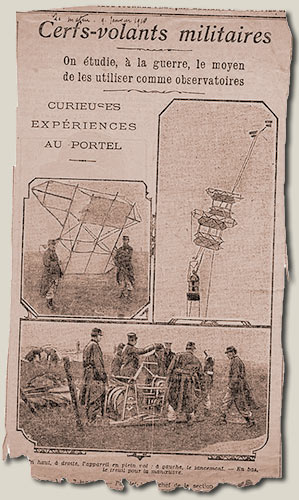 |
||
| As soon a 1905, the Artillery service seeks an apparatus allowing observations with winds of more than 10 m/s, in order to adjust shooting. Balloon,which is spherical, cannot be flown as soon as the wind exceeds 7 m/s. Kites become indispensable complement! Having understood the urgency to train qualified observers, Captain Saconney from the beginning of 1915, calls for volunteers whatsoever. This first formation center is actually more a place of training, because no method of observation are technically. |
||
| At the initiative of Captain Saconney a much more structured school, located in the Chalons camp, will emerge. In spring 1915, the methods improve. Captain Fauré, balloon 39, outside of his war service, aims to educate the student observers. | 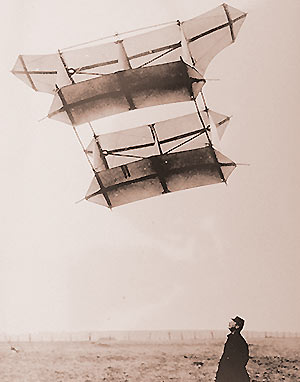 |
|
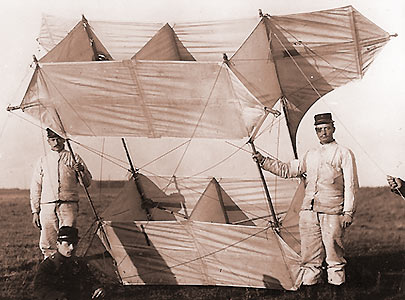 |
||
| This is the school of Saint-Pol, which also form observers. But the school of Saint-Pol must close. The methodical instruction is resumed in December 1915. The first observers are recruited among designers, surveyors, architects, large majority reservists and trained by their profession, to the perspective. Observers must be strong men. The selection is hard. They must remain immersed for days in complete solitude, struggling without saying against the cold or the biting wind, they can not even try to protect themselves. |
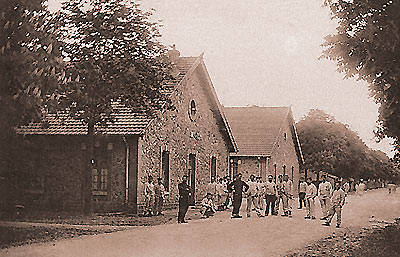 |
In 1912, there is only one section equipped with Saconney mounted kites. Félix Peaucou, thanks to his experience and training, is affected there. This section is based at "la Ménagerie", an old building in the park of the Versailles castle. (photo left) Vacated since a long time, it is reserved to balloon pilots and military kites under the orders of lieutenant Cholley and Captain Saconney. |
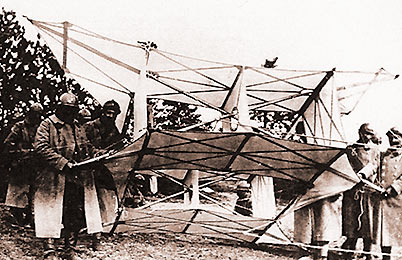 |
| Félix Peaucou, photo below, shares souvenirs among his main experiences : "Following the variety and quantity of maneuvers we had accomplished, we were already a well trained team. |
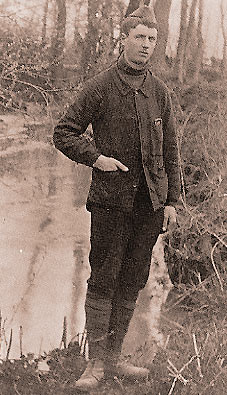 |
At that time, our lieutenant had chosen Villedieu, near Trappes, for our operations. It was the place where we went the most often, when we were at 'La Ménagerie'. After going several times for nothing, one day, where the wind and sun were present, we tried real and useful demonstrations". I was carrying the camera (a 13x18 reporter camera with a magazine) with orders to make specific shots: first, the Villedieu farm, situated near our aerial manoeuvres and composed of an important number of buildings, including an old chapel. This first ascension presented no special feature: I rose only to 150m approximately, stayed at this altitude for a while to make a few shots, then, soon after, I was back on the ground and many fellows enjoyed, as I did sooner, an air ride. I had the pleasure to find, as a conclusion to these successful manoeuvres, that my first aerial photographs by kite yield a fortunate result." At mobilization time, there is only two kite sections. They merge with two rare sections of aerostation (Epinal and Belfort) : on august 25th 1914, General Dubail creates in Epinal (Vosges, France) the Automobile section of tethered balloon and kite. |
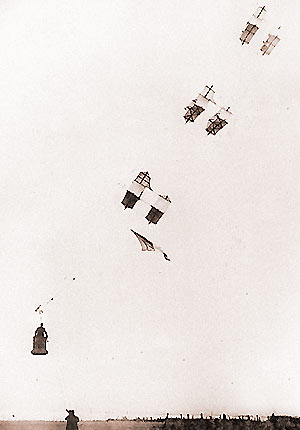 |
| Captain Saconney is its leader. It is composed of the automobile kite section of Belfort, of a truck used as a rig carrier and two trucks carrying the hydrogen tanks. |
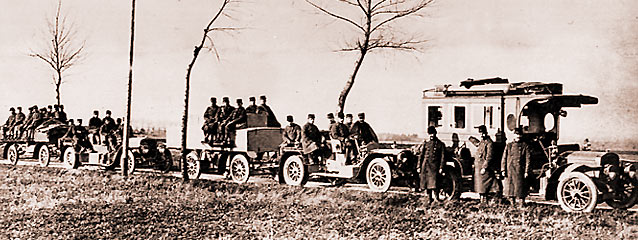 |
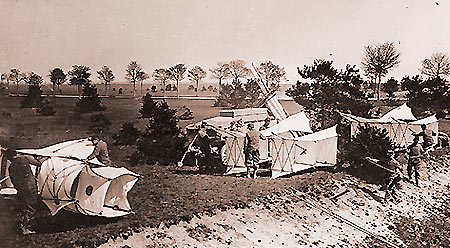 |
Rules applying to ascensions A strict set of rules governs the work of the teams : each soldier must keep his place, in a well established order, during an ascension. Using kites, the average observation altitude is between 300 and 500 meters and lasts from two to four hours. During observations, the objective is usually to search for enemy artillery or adjust shooting. The observers can find enemy artillery by the traces left in their perimeter, or by the glow of their shooting. In the gondola, the observers are linked by telephone to the leading artillery unit to transmit their vision of the battle field. They are equipped with a head set, leaving their hands free. Photo left: Training on the field (Belfort) |
 |
||||||





